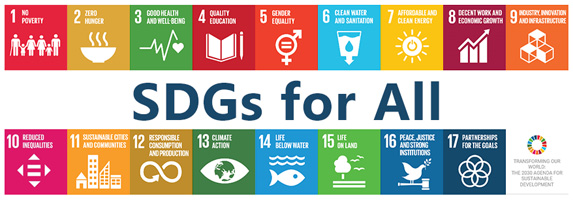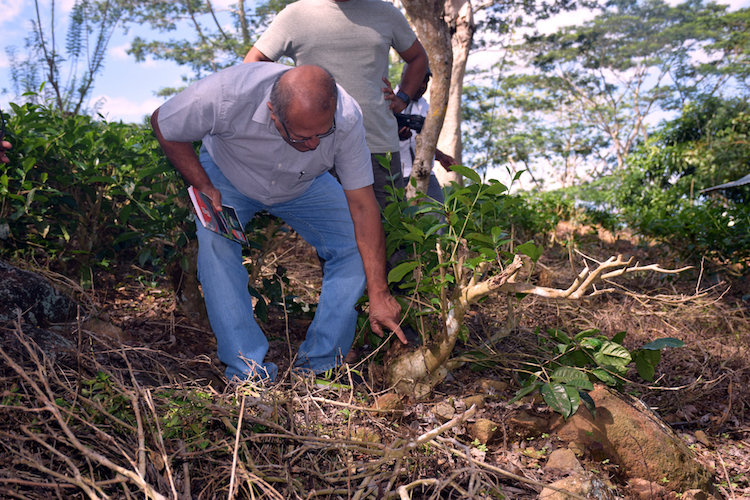By Stella Paul
RATNAPURA, Sri Lanka (IDN) – The deafening sound of half a dozen rolling machines in the Rilhena tea factory feels like a hard punch on the head, but for factory workers Bihita Madura and Rajakaxmi Chandrakumar this is sweet music.
Their noise-belching, black dust-spewing machine symbolises what matters most: another day at work. “It’s a normal day for us,” says Madura, watching Chandrakumar feed a shovel of black tea leaves into the giant rolling machine. Both in their forties, Madura and Chandrakumar have good reason to be relieved: the Rilhena factory, owned by Khawatte Plantations of tea major Dilmah, is one of the country’s best performing tea producers. JAPANESE | KOREAN
But elsewhere in the country, the industry has been battling a series of problems: drought, dry spells, erratic rain, degrading land, eroding soil, crashing tea prices, low yield, labour migration and closure of factories.
The tea industry in Sri Lanka annually produces over 388 million kg of tea and earns 1.6 billion dollars in foreign currency alone. But for past four years, there has been a steady decline, says a report published by the Sri Lanka Export Development Board (EDB). The major reasons are dry spells, below normal rainfall and drought.
According to a joint report by the local government and the World Food Programme (WFP), rainfall in 2016 was 23 percent less than the 30-year average. As a result, the country is now witnessing its worst drought in 30 years.
Another joint report by the government and the Office for the Coordination of Humanitarian Affairs of the United Nations (OCHA) says that over one million people are currently affected by prolonged drought in 17 out of 25 districts of Sri Lanka.
The drought – described as ‘severe’ by the United Nations Framework Convention on Climate Change (UNFCCC) – started early in 2016 with recurring dry spells that were intensified because of the El Niño phenomenon, according to Sri Lanka’s Department of Meteorology. The temperature shot up across the country and Ratnapura – Sri Lanka’s prime tea growing region – recorded more than 33 degrees centigrade – an increase of over 6 degrees compared with its usual 27 degrees, the department said.
The result of this has been extensively damaging for the entire agriculture sector, reducing the harvest of major crops, reports the Food and Agriculture Organisation (FAO). Cropping fields have also shrunk to 300,000 acres, from the usual 800,000 acres, due to lack of water, according to FAO statistics.
In the tea sector, production output which saw a drop of 11 percent in 2016 was the lowest in seven years, according to the Tea Development Board. In January this year, the output fell by a further 15.3 percent.
On the tea estates, besides depleting the water level, the effect of the drought has worsened land degradation and soil erosion. This reflects in the country’s Intended Nationally Determined Contributions (INDCs) which promise to “introduce suitable land and water management practices for central highlands and other marginal areas to minimise land degradation and to improve land and water productivity.”
Mahendra Peiris, a tea planter turned sustainable land management trainer in Maskeliya in Central Province, explains that “tea farming has been very exploitative here – such as a rampant use of synthetic weed killers and pesticides. Nobody bothered to pay attention to the quality of soil or the surrounding ecology. Soil erosion and land degradation are by-products of that.”
Peiris, formerly manager of the Maskelya tea estate, says that “the drought has now intensified soil erosion, stressing tea bushes and depleting nutrients in the soil, increasing the likelihood of reduced yields and incomes.”
Shashi Kala – a tea worker at the Bearwell tea estate in western Sri Lanka’s Sabaragamuwa province – one of the plantations that has adopted sustainable land management measures to plug draining of its profits. Credit: Stella Paul.
Shashi Kala, 37, works on the Bearwell tea estate in Nuwara Eliya district. The daily wages paid here are 750 rupees for plucking 19 kg of tea leaf a day. But this season the average volume of tea plucked by the labourers is often below 15 kg, she says. “Some of us have plucked as many as 50 kg a day, but now we are working hard to meet the daily quota,” adds Kala.
“This means the estate has to pay the labourers the same wages for a reduced amount of produce which eats into its overall profits,” says Giri Kadurugamuwa, a conservationist in Ratnapura.
To prevent losses, some plantations have tried lowering the wages, triggering mass protests and mass migration by the workers. This led to the closure of about 2 dozen tea factories in the past two years. “Migration has been a constant worry for many,” admits Dilshanka Jayatilake, manager of the Bearwell tea estate.
As the crisis grows, many tea farms are applying for Rainforest Alliance certification which symbolises sustainability maintained on an agricultural farm’s production and supply chain.
“So far, 78 plantations in Sri Lanka, including major producers like Bearwell, Kahawatte and Watawalla, have received the certification,” says Kadurugamuwa, head of the Rainforest Alliance in Sri Lanka.
The Alliance is currently partnering with the United Nations Environmental Programme (UNEP), Global Environment Facility and the local government on a sustainable land management project that aims to reduce land degradation.
Mahendra Peiris, one of the project’s lead trainers, says that the certification is given on meeting the global standard of the Sustainable Agriculture Network, which includes improving the well-being of an estate’s workforce and the environment.
The environmental measures must include little or no use of synthetic herbicides and pesticides, conserving water sources, recycling waste at plantations and factories, minimal use of non-renewable power and improving the carbon sink by increasing tree cover within plantations.
The certification helps earn the trust of buyers who are now “more aware of climate change and ecological standards” of a tea estate, says Janaka Gunawardene, manager of Kahawatte plantations: “Since the certification, our produce has fetched higher prices at the Colombo Tea Auctions. In fact, at last week’s auction, our tea fetched 680 rupees – the highest price in the country,” he says. [IDN-InDepthNews – 07 April 2017]
Photo (Top): Giri Kadurugamuwa – a conservationist, shows how land degradation is damaging a tea plant, making it hollow and fragile: “If you claw at the trunk, it will start to peel off.” (Middle): Shashi Kala – a tea worker at the Bearwell tea estate in western Sri Lanka’s Sabaragamuwa province – one of the plantations that has adopted sustainable land management measures to plug draining of its profits. Credit: Stella Paul.




